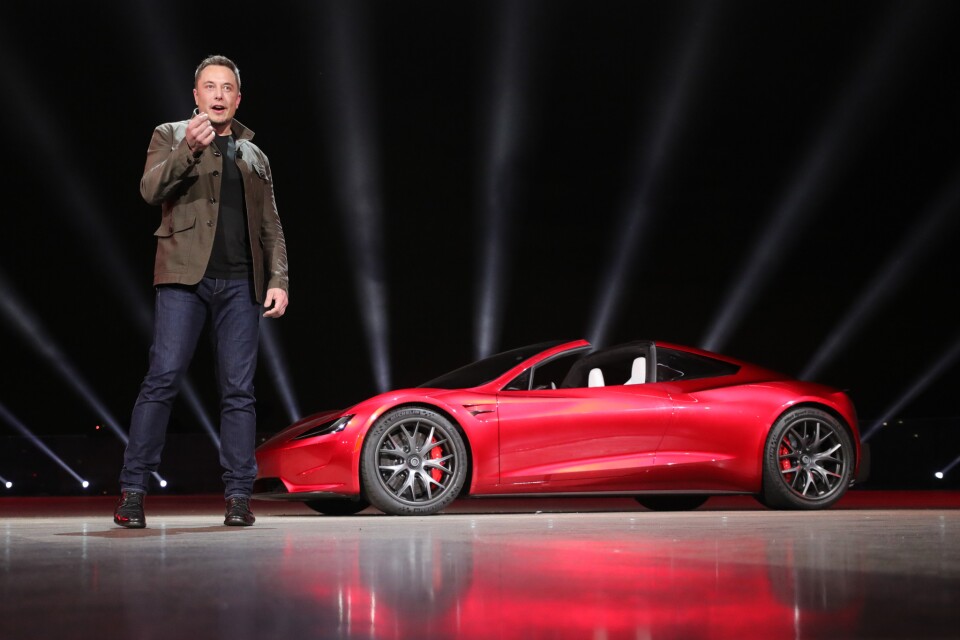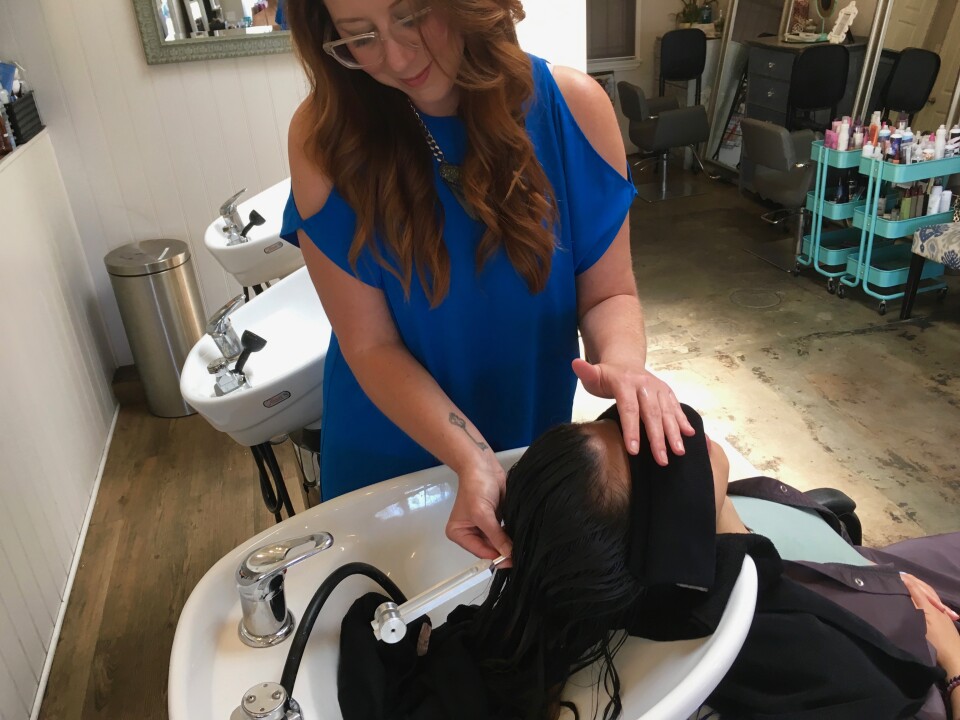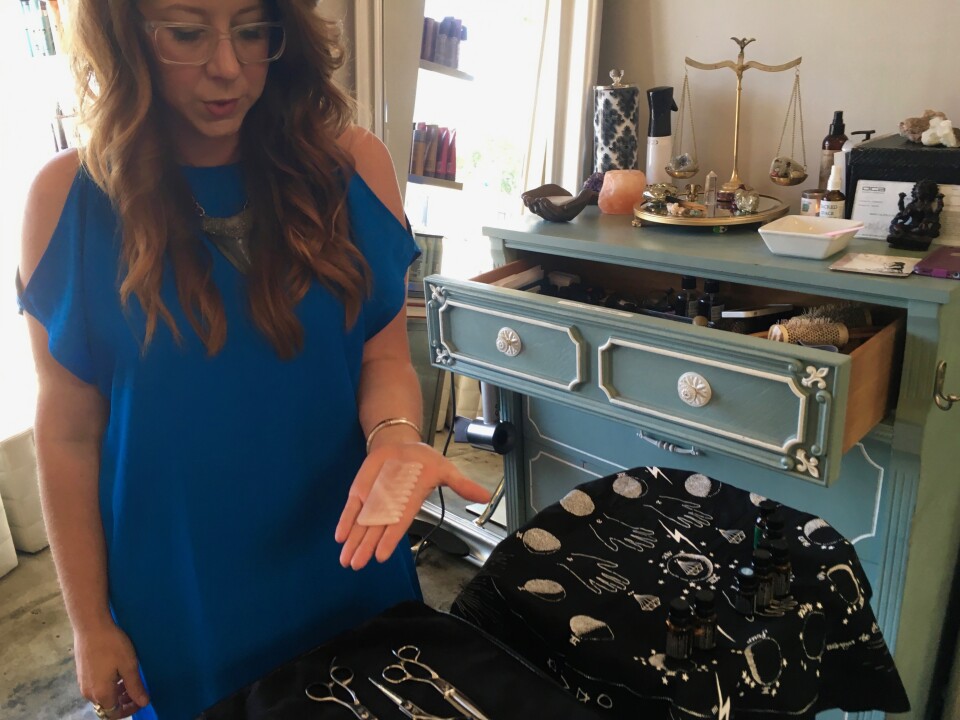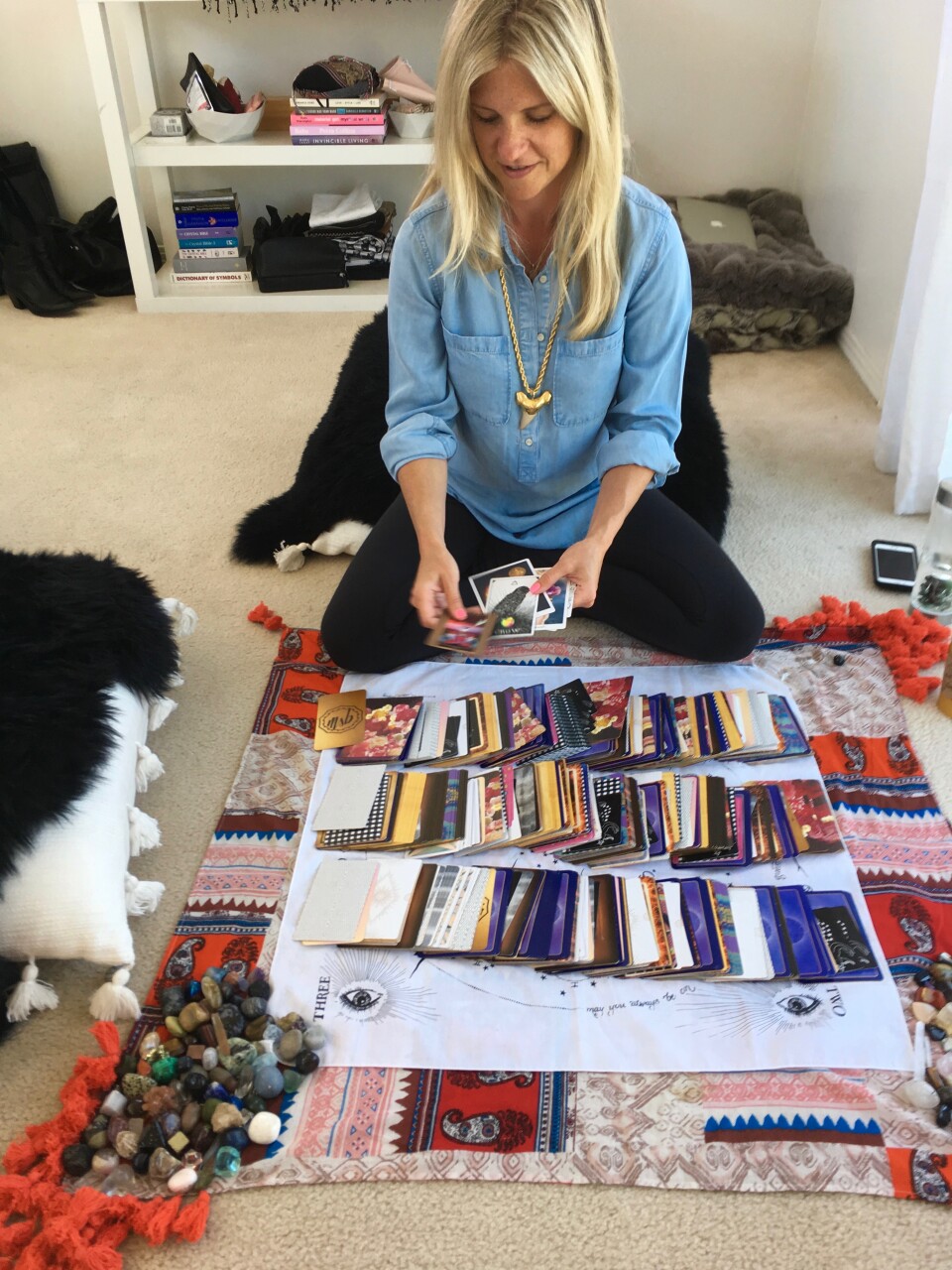Handling harassment claims in congress, the big reveal of Tesla's new plan to build semi-trucks, why LA might be more walkable than you think.
State of Affairs: Harassment in the House, CA GOPers vote 'no' on tax bill
This week on State of Affairs:
- Harassment claims in Congress are usually handled in secret, but California Congresswoman Jackie Speier is trying to change that. She's introduced a bill this week aimed at bringing greater transparency to claims reported in the House.
- The GOP's tax plan passed the House without the help of three California Republicans. Why they voted "no" when their 11 other colleagues voted "yes."
- California voters aren't big fans of Jerry Brown's gas tax. An L.A. Times/USC poll recently revealed that the tax, put in place to help pay for infrastructure fixes, is only favored by 46 percent of voters.
Highlight
John Myers, Sacramento bureau chief for the L.A. Times says, though support for the gas tax appears low, the chances of getting it repealed are slim:
Before people think that it's going to help those ballot measures to repeal the gas tax, they should remember that, historically, any ballot measure effort that starts under about 60 percent has a hard time of winning come election day.
The campaign engages, people hear things, there's going to be a massive effort — if these things get on the ballot — to save these taxes: the Governor, transportation groups, business groups that all supported this that said 'we need to fix the roads.'
Guests:
- Marisa Lagos, political reporter for KQED
- John Myers, Sacramento bureau chief for the LA Times
Press the blue play button above to hear more.
Tesla shows off its new semi — and a brand-new Roadster
Tesla showed off its new big rig Thursday night at an airport next to its design headquarters in Hawthorne. But CEO Elon Musk didn't stop there. Always one to push boundaries, he used the new Tesla Semi to drop off a brand-new version of the Roadster sports car, which rolled out of its cargo hold and sped away on the tarmac, demonstrating its record-breaking acceleration.
"There's only one thing beyond ludicrous, and that's plaid," Musk said, before the Roadster demonstrated what it's designed to do: obliterate any and all gas-powered competition with a sports car that can rocket from 0 to 60 mph in 1.9 seconds -- the fastest of any production car ever to be built. The four-seater will be able to travel 620 miles per charge, Musk said.

Before the Roadster rolled across the runway, the Tesla Semi had already exceeded expectations, with its sleek, aerodynamic cab and high-tech interior, featuring a centered steering wheel and two touch screens. And then Musk revealed the truck's range: 500 miles per charge, even carrying a load of 80,000 pounds. That's about double the range most analysts were expecting, and indicates its intended use for long-haul trucking.
Musk says he's going to build something called a megacharger network that will allow the trucks to be recharged while they're being unloaded. The trucks can recharge to 400 miles of range in 30 minutes, using power entirely generated with solar.

The Tesla Semi can accelerate from 0 to 60 mph in 5 seconds, Musk says -- 20 seconds when hauling 80,000 pounds.

The truck will be available in 2019, adding to a growing number of companies getting into electric freight. Already, Toyota is operating an electric truck powered with the same hydrogen fuel cells used in its Mirai sedan as part of a pilot program at the LA port
Automotive supplier, Bosch, is also working on a hydrogen fuel cell electric truck with with a company called Nikola Motor, while Daimler and Cummins have both built battery-electric truck concepts.
Neighborhoods downslope of La Tuna Fire vulnerable to mudslides
Why LA is more walkable than you think
If you're driving along Beverly Boulevard Saturday, you might see hundreds of people walking as a group, heading west.
They're probably a part of the Great Los Angeles Walk -- an annual event that encourages Angelenos to get out and experience the city by foot. This year's route is along Beverly Blvd. Walkers will start downtown and hoof it for 17 miles ... all the way out to Santa Monica.

Mike Schneider is the founder of the Great Los Angeles Walk, and when it comes to tips for newcomers, he has some pretty basic advice: Stay hydrated, wear comfortable shoes, apply lots of sunscreen and come with the spirit of exploration.
"I always tell people to stop at a couple restaurants, take photos," Schneider said. "Really take your time and feel the city."
Schneider created the event 12 years ago when he was celebrating his ten-year anniversary of living in L.A. He had just read the book "Wilshire Boulevard" by Kevin Roderick, in which a walk along Wilshire from downtown to the ocean is mentioned, and Schneider thought to himself, "I want to do that."
"I went on my blog and told people I'm doing this the weekend before Thanksgiving. Who wants to show up? I got about 40 people to show and we really explored that year.
I never expected it to be more than a one-time deal, but then I was like, why don't we do Pico? Why don't we do Santa Monica Blvd.? Sunset? Hollywood? We eventually started hitting a whole bunch of streets."
And since then, every year, rain or shine, the walk has taken place. One year it took place on Pico, another on Sunset and this year for the first time, on Beverly. It just stands to prove, despite its reputation, that Los Angeles is actually walkable.
The case for L.A.'s walkability
It's all about the neighborhood
To get you started, Schneider suggests picking a neighborhood you have never explored. Maybe it's Highland Park, downtown or Atwater village. The key is to stay in the eastern neighborhoods because they're generally more walkable.
"Throughout Southern California, it is definitely a patchwork of neighborhoods, and that's what's great about this town. Koreatown, Little Tokyo, East Hollywood -- every neighborhood has its own flavor, its own collection of restaurants and businesses and it's an opportunity to travel all over the world, just in your city."
It may not have been built to be walkable, but it has come a long way
"It's definitely changed. The walkability and accessibility of public transportation in Los Angeles have obviously grown a great deal. So it's much easier to explore this city on foot than it was 10-20 years ago."
And all signs only point to it getting better.
The little surprises along the way make the walk worth it
As Schneider walked along Beverly Blvd., he stumbled across a small koi pond filled with red-eared sliders. The discovery of the pond delighted Schneider. "Just this little koi pond with turtles that we're passing by..." he said, "I don't think I've ever seen this before."
It's those small treasures that can only be discovered on foot that fuels The Great LA walk.

"When you walk around other cities like New York, you have that sense of discovery. That's something I think a lot of people don't look for in L.A., but we have that. We have that just like any other metropolitan area. It's just not enough people are taking the time to do that."
It strengthens the sense of community
In spite of the large crowds the event draws out, there's still a tight sense of community on the walk, Schneider explained.
"The [participants] all sort of have a more than passing interest in their city, in Los Angeles. I find that even as the groups start to split up, people start to make friends. There has been at least one wedding that I know of that's come out of the walk, and I think other relationships as well and friendships."
To hear the full walk and talk, click the blue play button above.
Temporary regulations for legal marijuana now in place
Starting January 1, California vendors can sell recreational marijuana legally. So, in a dash to put regulations in place before that happens, state agencies announced temporary rules for legal weed on Thursday.
"The guidelines are now in place for 90 days," said Rachel Swan, who's reported on the regulations for the San Francisco Chronicle. "My understanding is they'll be expanded for another 90 days."
The new rules address a number of issues, including how people will be allowed to order cannabis for delivery.
"Delivery services can be licensed, which was a big win for them," Swan said. "But they can only deliver in automobiles. No bicycles, no aircraft, no boat, no drone, no robot car."
There are also rules in place that condemn packaging that appeals to children, as well as the amount of THC that can be in edible marijuana. Only ten milligrams will be allowed in each brownie, for example, and 100 milligrams per package.
"That's pretty average," Swan said.
To hear more about the latest California marijuana regulations, click the blue play button above.
Crystals, aura readings and healing treatments are no longer the 'hippie fringe' in LA
Before her client shows up, Andi Scarbrough lays out her tools.
There are the usual items a hairdresser needs – such as scissors and a brush – but with some special additions: a rose quartz comb, crystals and a deck of medicine animal cards.

Even the price for today’s treatment – $333 – has extra meaning.
“Repeating digits were the first sign that led me on this path,” Scarbrough said, the co-owner of Framed Salon in Santa Monica. “I think there’s a real opportunity to be intentional about how everything is set up.”
Scarbrough is part of a growing number of businesses tapping into spirituality – in Los Angeles and beyond.
She’s been a hairdresser for 15 years and for much of that time, she’s been doing spiritual work in the chair – but mostly on the sly. But recently she debuted CrownWorks, a service that offers the typical hair services – such as a haircut and blow dry – with some spiritual additions.
During this visit, her client Olivia Ku is getting the “Release and Recraft” treatment, which includes a reiki scalp massage, custom-blended essential oils and 30 minutes of “exploration and discovery.”

“I believe it’s a haircut and it’s to align your crown chakra,” said Ku, 29. “I’m not exactly sure what that means, to be honest, but I’m always in to a new adventure.”
This might seem like a high price for being “hippie woo woo,” as they call it, but there’s a demand for it.
Psychic services, which include card reading and astrology, are a $2.1 billion industry that’s seeing steady growth, according to a recent report by market research firm IBIS World.
Scarbrough admits none of this is new. There’s always been some interest in this type of spiritual work. What she thinks is novel is the normalization of it and the way it’s working into more mainstream businesses.

“I still introduce myself as just a hairdresser,” Scarbrough said with a laugh. “One of my clients referred to me as her hair witch recently. That was hilarious.”
Colleen McCann, a fashion stylist turned shaman, calls people who are incorporating this work “slashies.”
“I think the biggest trend... is they’re actually incorporating different types of spirituality into what they’re already doing – what their first business was,” said McCann, who is the house shaman for Gwyneth Paltrow’s GOOP. “The same way I did between fashion and shamanism, other women are incorporating their shamanic practices into psychology practices into home design or into beauty treatments.”

This trend is making spirituality a little more accessible to those who might be skeptical, Scarbrough said.
“I would say probably 30 percent of my regular clients are incorporating this at some level,” she said.
Because of this, she dedicates one day a week to solely CrownWorks clients at her Santa Monica salon.
Once Ku got in the chair, she and Scarbrough chatted about her life. She picked a crystal out and an animal spirit card, landing on the wolf.
“(It) often gets misinterpreted because people think about the lone wolf. But the wolf is about the pack. It’s about community and having a trustworthy tribe,” Scarbrough said.
Later, Scarbrough got the shampoo bowl ready for reiki and an essential oil treatment as Ku cinched on a robe.
“I feel like it just affirmed everything,” Ku said during the treatment.
After the service, Ku, who goes by the moniker LoveHealthOK on social media, posted the visit on her YouTube channel.
Scarbrough points to social media as another tool for mainstreaming such services.
It’s also a way to reach millennials, a ripe market for such services.
According to the PEW Research Center, they’re a generation that’s less religious than generations past – but just as spiritual.




